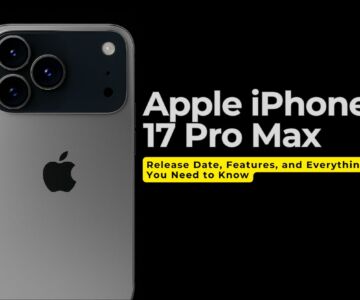 10 Best Waterfalls in Indonesia You Must Visit in 2025by admin / June 11, 2025
10 Best Waterfalls in Indonesia You Must Visit in 2025by admin / June 11, 2025How to Make UPI Payments Offline Without Internet – Full Guide for Indian Users
In today’s digital-first world, UPI (Unified Payments Interface) has transformed the way India transacts. Whether you’re buying vegetables, paying school fees, or sending money to family, UPI has made it all incredibly simple. But what happens when your internet connection fails?
Imagine being in a rural area, or facing poor mobile data — and you still need to make a payment. That’s where UPI payments offline come into play. The good news is: you don’t need a smartphone or internet connection to send money via UPI. Thanks to the *99# service powered by the National Payments Corporation of India (NPCI), UPI works even when offline.
In this article, you’ll learn exactly how to make UPI payments offline without internet, who it benefits, how to activate it, and how to use it — step by step.
What Are UPI Payments Offline?
Offline UPI payments are digital money transfers made through UPI without using an internet connection. This is made possible through the *USSD-based 99# service, which allows users to access basic banking features via mobile phones — even non-smartphones.
The *99# service connects your mobile phone to your UPI-enabled bank account using the GSM network, not the internet. This allows for a completely offline UPI experience.
How to Activate UPI Payments Offline
To make UPI payments without internet, you first need to activate the *99# service. Here’s how:
Step-by-Step Activation Guide:
-
Dial
*99#from your registered mobile number.-
This number should be linked to your bank account and UPI ID.
-
-
Select your bank.
-
A list of banks will appear; choose the one associated with your account.
-
-
Enter the last 6 digits of your debit card and the expiry date (MMYY) for verification.
-
Create your UPI PIN.
-
This PIN will be used to authorize all transactions.
-
Once this setup is complete, you’re ready to start making UPI payments offline anytime, anywhere.
How to Make UPI Payments Offline Without Internet
Here is the full process to send money using the *99# service:
Sending Money via *99# (Without Internet):
-
Dial
*99#on your phone. -
A menu will appear. Choose “1. Send Money.”
-
Select how you want to send money:
-
UPI ID
-
Mobile number
-
IFSC + Account Number
-
Saved Beneficiary
-
-
Enter the recipient details and the amount.
-
Confirm the transaction using your UPI PIN.
You’ll get a confirmation message right away. And just like that, you’ve made a UPI payment offline — no internet needed.
Benefits of UPI Payments Offline
Making UPI payments offline is not just convenient, it’s a game-changer for users in India. Here’s why:
No Internet Required
Perfect for areas with weak or no internet coverage — such as rural areas, highways, or train journeys.
Works on All Phones
Whether you have a basic feature phone or a smartphone with no data pack, this method works on any GSM mobile.
24/7 Access
The *99# service is available around the clock, including weekends and holidays.
Safe & Secure
All transactions are protected by your UPI PIN — even offline.
Boosts Financial Inclusion
Empowers people without smartphones or internet to still use digital payments.
How to Protect Your Business from Payment Fraud
Banks & Mobile Networks That Support Offline UPI
Supported Banks
Over 80+ Indian banks currently support the *99# USSD UPI service, including:
-
State Bank of India (SBI)
-
HDFC Bank
-
ICICI Bank
-
Axis Bank
-
Punjab National Bank (PNB)
-
Bank of Baroda
-
Union Bank
-
Canara Bank
-
Kotak Mahindra Bank
Supported Mobile Operators
You can access *99# from almost all major mobile network providers in India:
-
Jio
-
Airtel
-
Vi (Vodafone Idea)
-
BSNL
-
MTNL
Limitations of UPI Payments Offline
While this feature is incredibly useful, it does have some limitations:
| Limitation | Description |
|---|---|
| Transaction Cap | ₹5,000 per transaction (as per NPCI) |
| No QR Payments | Cannot scan QR codes with *99# |
| USSD Charges | Nominal fees (₹0.50/session) may apply |
| Short Session Time | USSD menu times out in ~2 minutes |
| Limited Interface | Text-based interface may feel outdated |
Despite these constraints, it remains a lifesaver in no-internet situations.
Bonus: Voice-Based UPI as an Offline Alternative
NPCI and fintech companies like Paytm and PhonePe are piloting voice-based UPI payments, which allow users to speak commands like:
“Pay ₹100 to Raju on PhonePe.”
This is being developed as a smart offline option for people who are illiterate or visually impaired. Though it’s not fully rolled out, it complements *99# well and reflects India’s leap toward inclusive digital payments.
GEO Optimization: Where UPI Offline Payments Matter the Most
This method is especially useful in:
-
Rural villages
-
Remote regions (e.g., Himachal, Northeast India)
-
Low-income neighborhoods
-
Tier 2 and Tier 3 cities
-
Travel zones with poor connectivity (e.g., Indian Railways, forest zones)
India’s vision of “Digital India” is incomplete without services like UPI offline payments that reach the underserved and unconnected population.
Quick Summary: UPI Offline vs. UPI Online
| Feature | UPI Online | UPI Offline (*99#) |
|---|---|---|
| Internet Required | ✅ Yes | ❌ No |
| Works on Feature Phone | ❌ No | ✅ Yes |
| QR Code Support | ✅ Yes | ❌ No |
| Voice Access | ❌ Rare | 🔄 In Progress (Voice UPI) |
| Best Use Case | Urban areas | Rural / no-network zones |
Final Thoughts
The rise of UPI has democratized digital payments in India. With the introduction of the offline UPI payment method via *99#, this accessibility has gone one step further.
Whether you’re a farmer in a village, a vendor in a market, or a traveler stuck in a no-network zone, you can now make UPI payments offline — anytime, anywhere, without internet or apps.
It’s a small feature with a massive impact on financial inclusion, empowering millions of Indians to go cashless with confidence.



